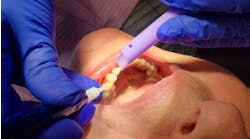Retail giant Walmart recently shocked the health-care world with the bombshell announcement it will be closing all 51 Walmart Health Clinics. The company’s telehealth operation that formed three years ago after acquiring the telehealth platform, MeMD, will also be shutting down.
So, what happened? This news came approximately one month after Walmart planned to add four more health clinic locations in Texas. Their official announcement noted that the decision was based on the company’s inability to generate a profit, which made operating Walmart Health unsustainable. This will directly affect dental practitioners as these clinics provide various dental services.
Why the retreat?
We know these clinics are closing due to financial reasons, but what exactly caused one of the world’s largest retailers to scale back their primary care services? Several possibilities come to mind:
Inexperience
-
Walmart Health was run by an MD, which means they may have understood clinical care but lacked the experience required to manage capital expenditures like offices, equipment, laboratories, etc. In addition, a clinical MD may not have grasped the nuances of dentistry.
-
Like most of the healthcare industry, Walmart Health had trouble hiring and retaining qualified staff, both employees and leaders. This may have negatively impacted scheduling, quality control, and overall customer experience. It’s also possible that some of the higher-ups who touted the idea of adding health care services weren’t around to execute their high-priced strategy.
Business
-
Walmart wasn’t calling the shots. The retailer is notorious for dictating the terms of business to its suppliers. In this case, it didn’t have much influence over insurance companies or the algorithm-based system of dental insurance. Rather than being fiscal agents, insurance companies decide what types of treatments are paid or denied based on claimant data. This might not represent Walmart’s clients and their demographic. Some carriers routinely deny up to 60% of claims that exceed a certain dollar threshold. This is usually equal to less than annual premiums. These denials lead to delayed treatment or out-of-pocket expenditures for the patient, which caught many leaders who jumped into health care without careful financial analysis off guard. Plus, delayed treatment or getting more out-of-pocket expenditures for the patient began working against their brand, which pushes the notion of being a low-cost retailer.
-
The retail business is primarily cash-and-cary. Waiting for insurance reimbursements did not deliver the cashflow Walmart was accustomed to.
-
A low everyday prices policy combined with low insurance reimbursement fees caused a double whammy of low profit margins.
-
Walmart’s COVID testing and vaccination program fooled executives into thinking that it would be easy to generate profit from the health care industry. This included millions of COVID-19 tests and vaccinations that the company administered.
-
Primary care is generally a loss leader. More robust systems, such as hospitals and DSOs, use primary care to funnel patients into specialized treatment and high-priced procedures. Walmart was limited to providing mostly low-cost and low-margin episodic primary care services.
Telehealth
-
Walmart telehealth did not include teledentistry. Like telemedicine, teledentistry saves money on initial visits or episodic care. However, this was not sufficiently marketed to Walmart clients. When the retailer purchased MeMD, it purchased an off-the-shelf platform that included urgent care, men’s health, women’s health and behavioral health — and psychiatry with no ability to conduct virtual dental consultations.
-
The retailer’s telehealth business cut into its impulse buying while customers were waiting for their pharmacy prescriptions. This remains a core part of Walmart’s revenues, which are inventory-driven and less expensive to staff than other health services.
Others have tried
Walmart isn’t the only retailer forced to rethink its aspirations of being a primary care provider, nor is it the first to encounter the practical management of health care. For example, Walgreens recently announced that it is closing 160 of its VillageMD primary care clinics. CVS is also pivoting by closing 25 of its Minute Clincs and investing in the expansion of its Oak Hill Health Clinics, which specialize in an older demographic with senior care.
Earlier this year, a Congressional committee released a report about lowering health care costs through transparency and competition, as current costs are unsustainable for many Americans. Even large conglomerates like Google, Facebook/Meta, and Microsoft do not want to tackle the rising health care costs as a percentage of GNP.
In sum, many large companies have learned what many of us already know, which is that primary care is hard, but primary dental care is even harder.
Margaret Scarlett, DMD, is a dentist, futurist, and thought leader for Digital Transformation Partners. Retired from the US Public Health Service, her work centered on analysis of large population-based data sets for the Health Resources and Service Administration, the US Census for the National Health Interview Survey, the CDC for its most accurate surveillance system, and Health and Human Services. Dr. Scarlett continues to work with health systems, large DSOs, and organizations on AI in dentistry to advance digital transformation of dentistry.
Michael Ventriello is widely regarded as the “Dental Product Launch Expert,” and the owner and founder of the PR-forward dental marketing agency, Ventriello Communications. He is also the co-founder and Chief Marketing Officer of Dental Transformation Partners. Michael is an award-winning copywriter who specializes in developing strategic marketing communications and public relations programs for game-changing dental products, services, and companies. Michael is also a published author and dental industry pundit. He can be contacted at [email protected].








